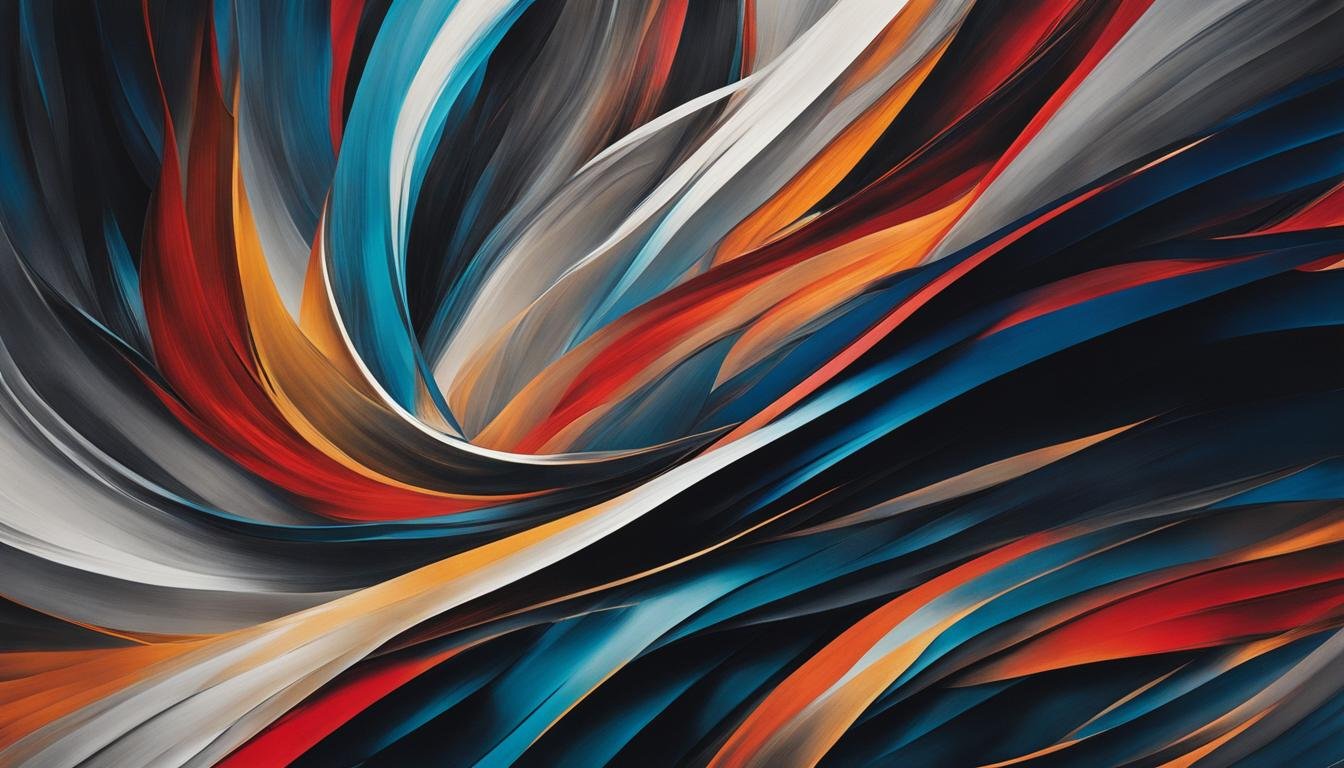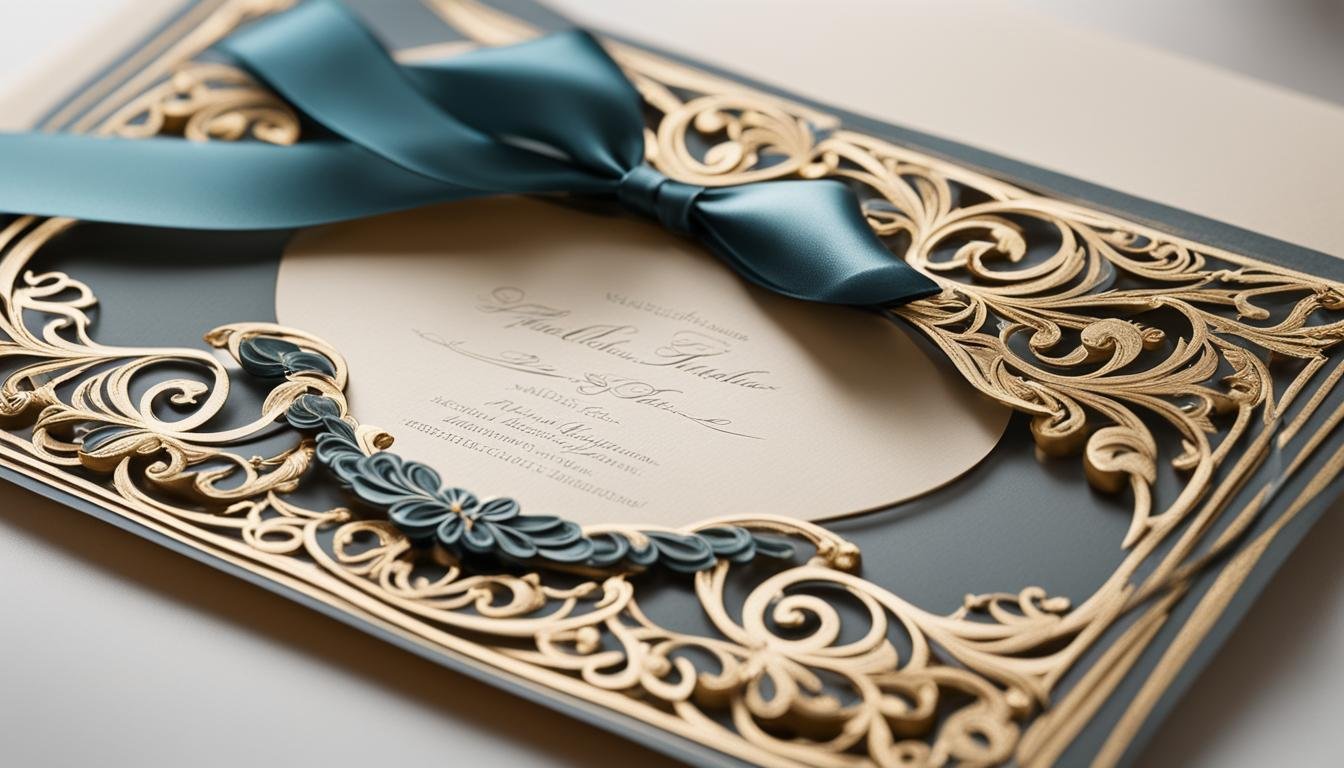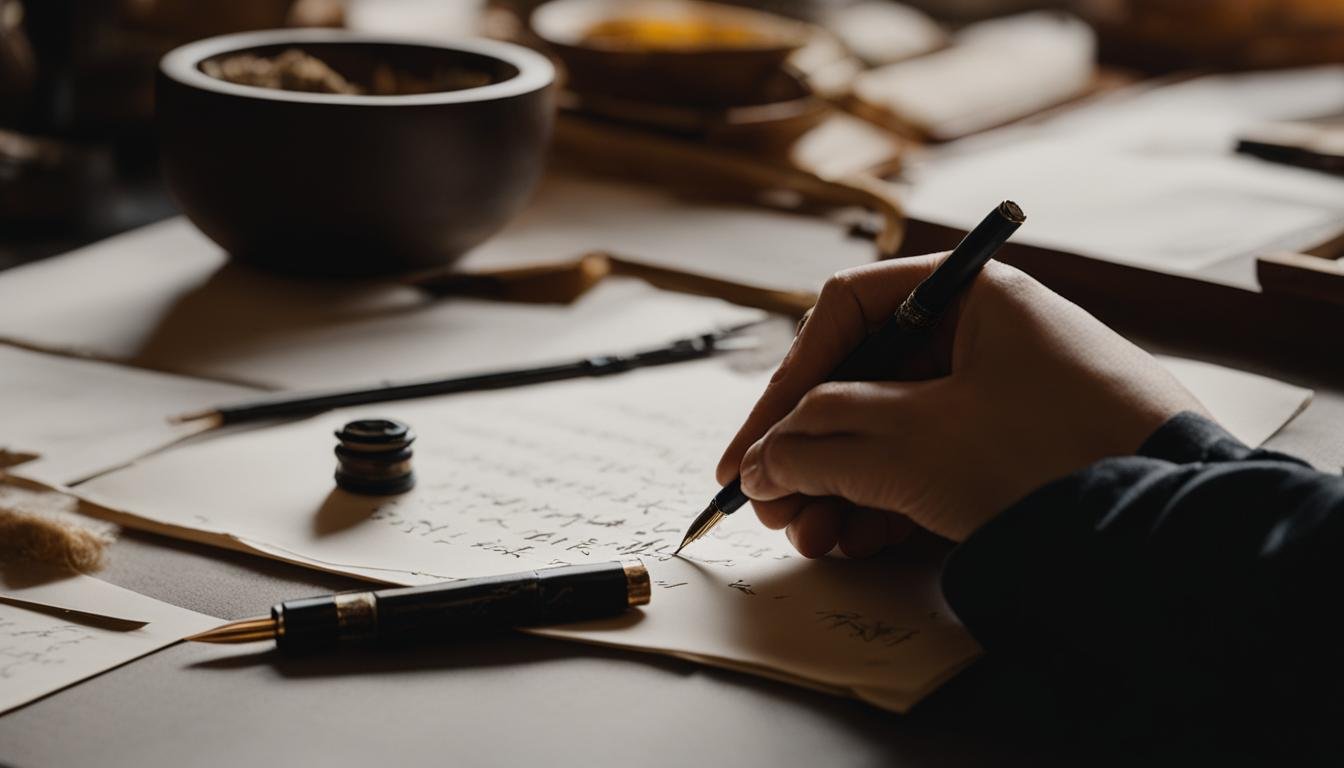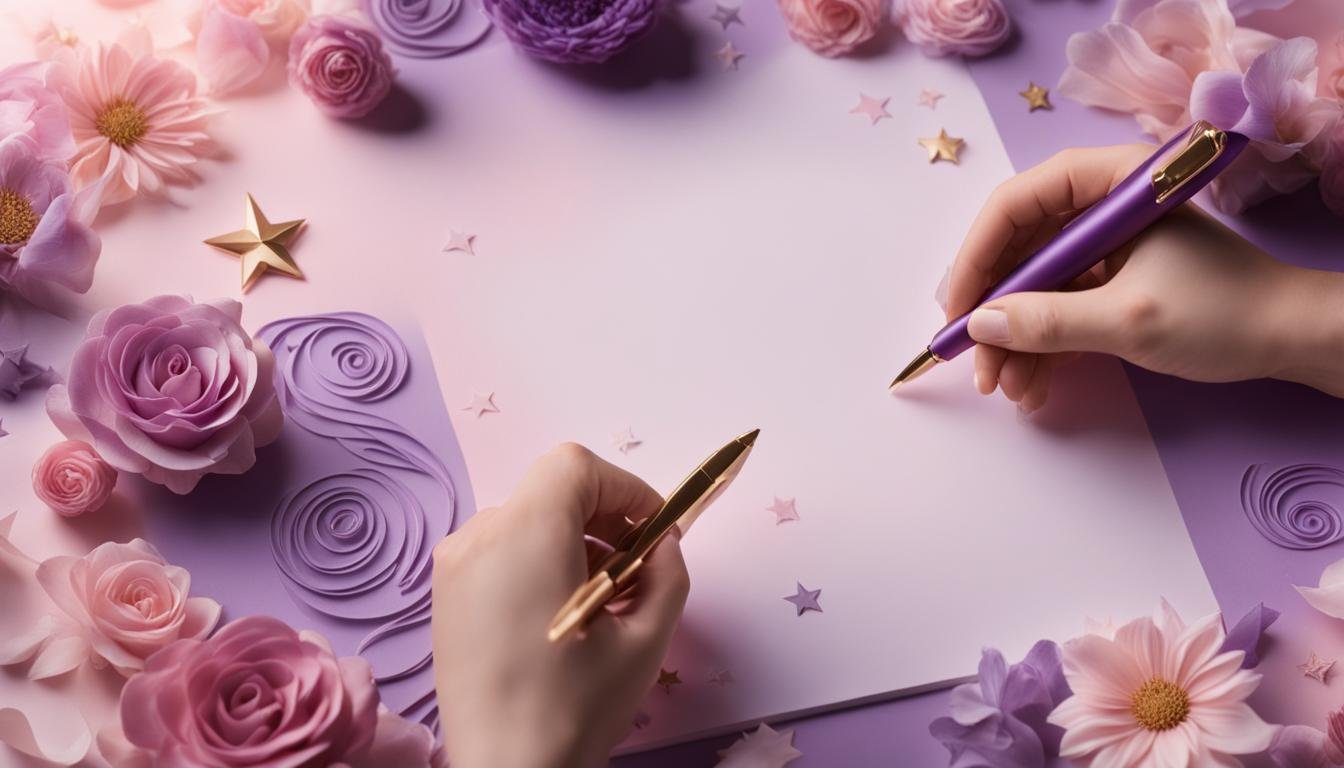Calligraphy Stroke Techniques: Master These Tips to Perfect Your Art Instantly
Welcome to the world of calligraphy stroke techniques! Whether you’re a beginner or an experienced artist, mastering the art of calligraphy strokes can elevate your artwork to new levels. In this section, we will explore the fundamentals of calligraphy stroke techniques and how they can enhance your creative expression. We will delve into brush calligraphy techniques, with a focus on modern calligraphy strokes. By understanding and practicing these techniques, you can perfect your art and create beautiful, intricate calligraphy pieces.
Key Takeaways:
- Calligraphy stroke techniques are essential for creating stunning calligraphy artwork.
- Brush calligraphy techniques and modern calligraphy strokes are key areas to focus on.
- Mastering calligraphy stroke techniques requires consistent practice and the right tools.
- By perfecting your calligraphy strokes, you can add a unique touch to your artwork.
- Embrace the learning process and enjoy the journey of becoming a skilled calligrapher.
Understanding Basic Calligraphy Strokes

In this section, we will delve into the fundamental techniques of calligraphy strokes that form the building blocks of exquisite lettering. By mastering these basic calligraphy strokes, you will lay a strong foundation for creating stunning calligraphy artwork.
Using various brush lettering techniques, you can achieve beautiful and versatile calligraphy strokes. Each stroke has its unique characteristics and contributes to the overall visual appeal of your letterforms. Let’s explore some of the variations of calligraphy strokes:
- Downstroke: The downstroke forms the backbone of calligraphy letterforms, creating thick lines with a brush or pen.
- Upstroke: The upstroke is the opposite of the downstroke and is typically lighter and thinner.
- Underturn: The underturn is a graceful curve that starts thick and gradually tapers into a thin stroke.
- Overturn: The overturn is the opposite of the underturn, starting thin and gradually thickening as it curves.
- Ascending stem: The ascending stem is a straight vertical line that is typically thinner than the downstroke.
- Descending stem: The descending stem is another straight vertical line, similar to the ascending stem but thicker.
By understanding and practicing these basic calligraphy strokes, you will gain the skills needed to create various letterforms and achieve the desired artistic effects.
| Stroke | Description |
|---|---|
| Downstroke | Creates thick lines with a brush or pen |
| Upstroke | Opposite of the downstroke, lighter and thinner |
| Underturn | Graceful curve that starts thick and tapers |
| Overturn | Opposite of the underturn, starts thin and thickens |
| Ascending stem | Straight vertical line, typically thinner than downstroke |
| Descending stem | Straight vertical line, thicker than ascending stem |
Practicing Calligraphy Stroke Techniques
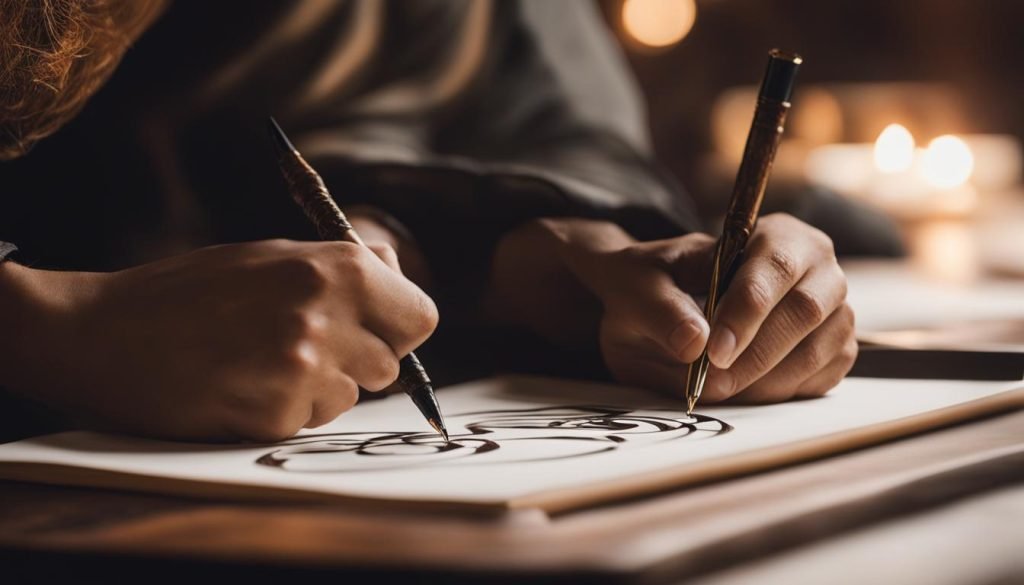
Mastering calligraphy stroke techniques is essential to becoming a skilled calligrapher and creating beautiful lettering compositions. However, it takes consistent practice and dedication to improve your technique and proficiency. In this section, we will guide you through practical exercises and lettering stroke exercises that will help you practice calligraphy stroke techniques effectively.
Lettering Stroke Exercises
To begin practicing calligraphy strokes, it is important to start with basic exercises that focus on individual strokes. By isolating each stroke and practicing it repeatedly, you can develop muscle memory and improve your control over the pen. This will ultimately lead to smoother and more consistent strokes in your calligraphy.
One helpful exercise is to create an alphabet chart where you practice each stroke in both lowercase and uppercase letters. This will allow you to become familiar with the different variations and connections between strokes. You can also experiment with different pen widths and pressures to add depth and character to your lettering.
Resources for Calligraphy Stroke Practice
In addition to lettering stroke exercises, there are several resources available to help you further improve your calligraphy skills. Online tutorials and video demonstrations can provide visual guidance and instruction on various stroke techniques. Calligraphy practice sheets can also be beneficial, as they provide specific drills and exercises to target different strokes.
Furthermore, consider joining a calligraphy community or taking a calligraphy workshop. By connecting with other calligraphers and learning from experienced professionals, you can gain valuable insights and feedback on your stroke technique. Remember, practice is key, and by consistently dedicating time to calligraphy stroke practice, you can continue to refine your skills and create stunning calligraphy artwork.
| Benefits of Calligraphy Stroke Practice | Recommended Resources |
|---|---|
|
|
By incorporating these resources into your calligraphy stroke practice routine, you can continuously challenge yourself and elevate your skills. With time and dedication, you will see significant improvement in your calligraphy strokes and overall artistic expression.
Tools for Calligraphy Stroke Techniques
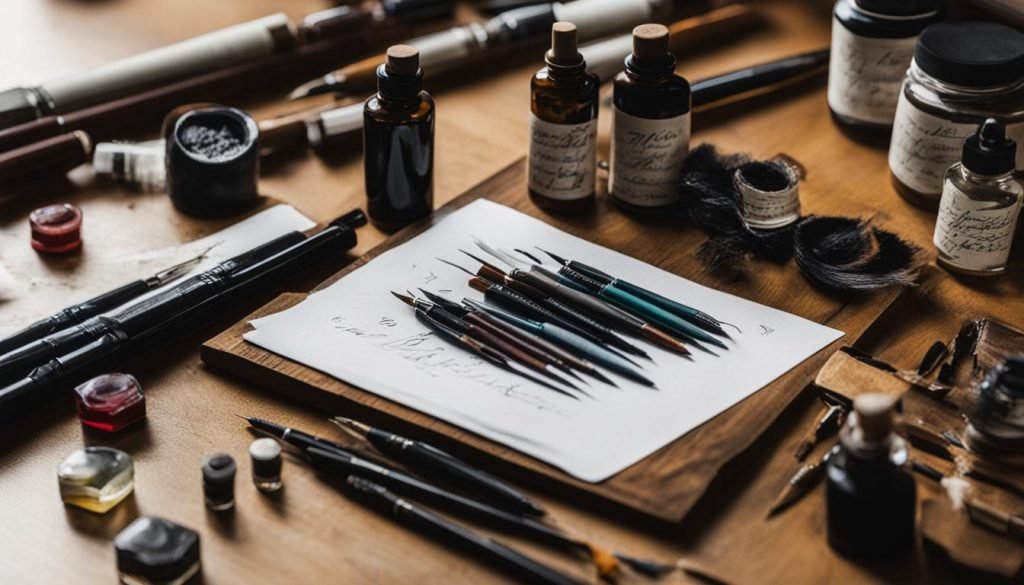
When it comes to calligraphy stroke techniques, having the right tools can make all the difference in achieving beautiful and precise lettering. Whether you’re a beginner or an experienced calligrapher, investing in quality brush pens and calligraphy pens is essential for enhancing your stroke quality. Additionally, practice sheets can help you develop consistent stroke patterns and improve your overall technique.
Brush pens are a popular choice for calligraphy enthusiasts due to their versatility and ease of use. These pens have a flexible brush tip that allows for varying line thicknesses and smooth strokes. When selecting brush pens, consider the tip size, material, and ink quality to ensure a satisfying writing experience. Experimenting with different brands and styles can help you find the perfect brush pen that suits your preferences.
Calligraphy pens are another essential tool for calligraphy stroke techniques. These pens typically have a pointed nib that allows for precise control and delicate strokes. They come in a variety of sizes and styles, including fountain pens and dip pens. Fountain pens are a convenient option as they come with pre-filled ink cartridges, while dip pens offer more flexibility in terms of ink selection.
| Tool | Pros | Cons |
|---|---|---|
| Brush Pens | Easy to use, versatile, varying line thicknesses | May require more practice to achieve desired stroke quality |
| Calligraphy Pens | Precise control, delicate strokes, wide range of options | May need to refill ink cartridges or clean dip pen frequently |
| Practice Sheets | Aids in developing consistent stroke patterns | May require additional printing or purchase |
“The right tools can make all the difference in achieving beautiful and precise calligraphy strokes.”
Practice sheets are an invaluable resource for honing calligraphy stroke techniques. These sheets provide guidelines for practicing different stroke patterns, allowing you to build muscle memory and improve your penmanship. If you don’t have access to printable practice sheets, you can create your own by drawing guidelines on blank paper or purchasing pre-made pads designed for calligraphy practice.
Remember, investing in high-quality brush pens, calligraphy pens, and practice sheets is an investment in your calligraphy journey. These tools will not only enhance your stroke quality but also provide you with the confidence to create stunning lettering compositions. With regular practice and the right tools, you’ll be well on your way to mastering calligraphy stroke techniques.
Understanding the Difference Between Calligraphy and Cursive
In the world of handwriting, two popular styles often come up: calligraphy and cursive. While they may seem similar at first glance, there are distinct differences between these penmanship styles that set them apart. Understanding these differences can help you approach calligraphy stroke techniques with a fresh perspective and enhance your overall understanding of the art.
Calligraphy
Calligraphy is a decorative writing style that places emphasis on individual strokes and the artful formation of letters. It is often used in formal invitations, wedding stationery, and artistic compositions. Calligraphy strokes are deliberate and precise, with attention given to the thickness and thinness of each line. This style requires focus and control, as well as an understanding of various techniques to create visually pleasing letterforms.
Cursive
Cursive, on the other hand, is a fluid and connected style of writing that is often taught in schools. It is typically used for everyday writing purposes and personal correspondence. In cursive, the letters flow together, creating a smooth and continuous script. While cursive can vary in style and legibility, it generally prioritizes speed and efficiency over the artistic elements of calligraphy strokes.
By understanding the differences between calligraphy and cursive, you can better appreciate the unique qualities of each style. Whether you choose to focus on mastering calligraphy stroke techniques or refining your cursive handwriting, both can be valuable skills to have in your repertoire. So whether you’re looking to create elegant calligraphy pieces or simply improve your everyday handwriting, embracing the distinct characteristics of these styles will guide you on your penmanship journey.
Advanced Stroke Techniques and Decorative Flourishes

Once you have mastered the basic calligraphy strokes, it’s time to take your artwork to the next level with advanced stroke techniques and decorative flourishes. These techniques add an extra layer of creativity and flair to your lettering, making it truly unique and eye-catching. In this section, we will explore some of the most popular decorative stroke techniques and flourishing techniques in calligraphy.
One popular decorative stroke technique is the loop flourish, where you add loops and curls to your letters to give them a whimsical and elegant look. This technique is often used in wedding invitations and formal scripts. Another technique is the ribbon flourish, where you create flowing ribbon-like strokes that wrap around your letters, adding a sense of movement and grace.
When it comes to flourishing techniques, there are endless possibilities to explore. You can experiment with different shapes, sizes, and styles of flourishes to create your own signature look. Whether it’s a simple swirl or an intricate vine, flourishes can beautifully enhance your calligraphy and make it stand out.
| Decorative Stroke Techniques | Flourishing Techniques |
|---|---|
| Loop flourish | Swirls and curls |
| Ribbon flourish | Vine and foliage |
| Double-line strokes | Interlocking flourishes |
As you explore these advanced techniques, don’t be afraid to experiment and push the boundaries of traditional calligraphy. Let your creativity flow and allow your strokes to express your unique style. Remember, calligraphy is an art form, and like any art form, it’s meant to be an expression of your individuality.
Continue to practice regularly to refine and perfect these advanced stroke techniques. With time and dedication, you will develop your own distinctive calligraphy style that showcases your creativity and skill. So grab your pens, let your imagination soar, and explore the world of advanced stroke techniques and decorative flourishes in calligraphy!
Mastering Variations of Calligraphy Strokes
Once you have a solid understanding of the basic calligraphy strokes, it’s time to explore the world of variations. These variations allow you to create unique and personalized letterforms, making your calligraphy style truly your own. By incorporating different variations of calligraphy strokes into your artwork, you can add depth, texture, and visual interest.
Exploring Different Styles
There are countless ways to modify and manipulate basic calligraphy strokes to create variations. One popular technique is adding serifs, which are small decorative strokes at the ends or corners of letters. Serifs can give your calligraphy a more traditional and elegant look. Alternatively, you can experiment with different weights and widths of strokes, creating contrast and emphasizing certain parts of your letterforms.
Another way to introduce variation is through the use of flourishing techniques. Flourishes are decorative elements that extend from certain strokes or letters, adding flair and elegance to your calligraphy. They can be simple or intricate, depending on your personal style and the overall composition of your artwork.
Embracing Individuality
Mastering variations of calligraphy strokes allows you to develop a unique style that sets you apart as a calligrapher. By experimenting with different techniques and exploring your creativity, you can create letterforms that reflect your personality and artistic vision. Don’t be afraid to break the rules and try new things. It’s through this process of exploration that you’ll discover your signature style.
Remember, practice is key when it comes to mastering calligraphy stroke variations. Dedicate time to honing your skills and experimenting with different techniques. With patience and persistence, you’ll develop a repertoire of captivating variations that will elevate your calligraphy artwork to new heights.
| Variation | Description |
|---|---|
| Serifs | Add small decorative strokes at the ends or corners of letters for a more traditional and elegant look. |
| Weights and widths | Experiment with different stroke weights and widths to create contrast and emphasize specific parts of your letterforms. |
| Flourishes | Add decorative elements that extend from strokes or letters, adding flair and elegance to your calligraphy. |
The History and Evolution of Calligraphy Strokes
Calligraphy strokes have a rich history, dating back centuries and representing different cultures and traditions. The art of traditional calligraphy strokes has evolved over time, influenced by various factors such as technological advancements, cultural shifts, and individual creativity. By exploring the history and evolution of calligraphy strokes, you can gain a deeper appreciation for this timeless artform and its significance in the world of lettering.
In ancient civilizations, calligraphy was often associated with religious scripts and sacred texts. The strokes were meticulously crafted by hand, using tools like quills, reeds, or brushes. These strokes showcased the mastery and skill of the calligraphers, with each stroke carefully executed to create harmony and balance in the written word.
As time passed, calligraphy strokes began to evolve alongside advancements in writing instruments and materials. With the invention of the printing press in the 15th century, calligraphy strokes took on a new role in society. They became a symbol of elegance and refinement, as calligraphers used their skills to create elaborate handwritten manuscripts, invitations, and official documents.
“Calligraphy strokes are the backbone of the art, representing the individuality and expression of the calligrapher’s hand.”
The development of different calligraphy styles and scripts, such as Gothic, Italic, and Copperplate, further transformed the art of calligraphy strokes. Each style had its own unique characteristics and stroke formations, contributing to the diversity and creativity within the calligraphy community.
The Legacy of Traditional Calligraphy Strokes
Today, traditional calligraphy strokes continue to inspire and influence contemporary calligraphers and lettering artists. While digital tools and software have made calligraphy more accessible to a wider audience, the fundamental principles of calligraphy strokes remain unchanged. The delicate balance between thick and thin strokes, the fluidity of movement, and the attention to detail are still essential aspects of creating beautiful calligraphy art.
| Traditional Calligraphy Strokes | Description |
|---|---|
| Downstroke | A thick and bold stroke created by applying pressure on the pen or brush. |
| Upstroke | A thin and lighter stroke created by lifting the pen or brush off the paper. |
| Transition Stroke | A gradual transition from a thin upstroke to a thick downstroke, adding movement and flow to the letterforms. |
| Loop | A circular stroke often found in script calligraphy, adding elegance and decorative flair to the letters. |
Understanding and mastering the history and techniques of traditional calligraphy strokes is essential for anyone wishing to delve deeper into the art of lettering. By studying the strokes of the past and their evolution, you can develop a solid foundation for creating your own unique calligraphy style and continue the rich legacy of this ancient artform.
Perfecting Calligraphy Strokes in Procreate
Are you ready to take your calligraphy skills to the digital realm? Procreate, a popular digital art platform, offers a range of tools and features that can help you perfect your calligraphy strokes. Whether you’re already familiar with traditional calligraphy or just starting out, Procreate opens up a world of possibilities for creating beautiful lettering compositions. In this section, we’ll explore specific techniques and brush settings in Procreate that will enhance your calligraphy strokes and bring your artwork to life.
One of the key advantages of using Procreate for calligraphy is the ability to achieve smooth and elegant stroke variations. With its wide selection of brushes and customizable settings, you can create a wide range of stroke styles, from delicate hairlines to bold and expressive strokes. By experimenting with different brush options and adjusting settings such as pressure sensitivity and tapering, you can achieve the desired effect for each stroke.
In addition to stroke customization, Procreate also offers features that can streamline your calligraphy workflow. The ability to create and save custom brush sets allows you to organize your favorite brushes for quick and easy access. Procreate also supports layers, allowing you to work on different elements of your composition separately and make adjustments without affecting the entire artwork.
Another useful feature in Procreate is the ability to use grids and guidelines to ensure consistent spacing and alignment of your strokes. These tools can be particularly helpful when creating compositions with multiple letterforms or when adding decorative flourishes to your calligraphy. By utilizing the grid and guidelines, you can maintain a clean and balanced layout throughout your artwork.
Tips and Tricks for Mastering Calligraphy Stroke Techniques
If you’re looking to take your calligraphy stroke techniques to the next level, we’ve got you covered. In this section, we’ll share valuable tips and tricks that will help you improve the quality and consistency of your strokes. Whether you’re a beginner or an experienced calligrapher, these insights will prove invaluable on your journey to mastering calligraphy.
1. Practice, Practice, Practice: Consistent practice is key to improving your calligraphy strokes. Set aside dedicated time each day to hone your technique. Start by focusing on the basic strokes and gradually work your way up to more advanced techniques. Remember, it’s all about muscle memory, so the more you practice, the better you’ll get.
2. Experiment with Different Pens: Don’t be afraid to try out different pens and nibs to find the ones that work best for you. Each pen has its own unique qualities and may produce different stroke effects. Test out different sizes and flexibilities to see which ones suit your style and preference.
3. Pay Attention to Pressure and Speed: The way you apply pressure and control your speed can greatly impact your calligraphy strokes. Experiment with varying levels of pressure to achieve different line thicknesses. Additionally, practice writing at different speeds to find the pace that allows you to maintain control and produce clean, smooth strokes.
Quote of the Day:
“The difference between a good calligrapher and a great calligrapher lies in their attention to detail and willingness to practice.” – Unknown
Table: Common Calligraphy Stroke Issues and Solutions
| Issue | Solution |
|---|---|
| Inconsistent line thickness | Focus on maintaining even pressure throughout your strokes. Practice applying consistent pressure to achieve uniform lines. |
| Shaky or wobbly lines | Try adjusting your hand position and grip. Relax your hand and arm muscles to achieve smoother, more controlled strokes. |
| Poor letter spacing | Pay attention to the spacing between your letters. Practice writing slowly and deliberately, allowing enough space between each letter for a balanced composition. |
| Inconsistent slant | Use guidelines to help you maintain a consistent slant. Practice drawing lines at the desired angle before writing your letters. |
Remember, mastering calligraphy stroke techniques takes time and patience. Don’t be discouraged by initial setbacks, and embrace the learning process. With dedication and practice, you’ll soon be creating stunning calligraphy pieces that showcase your skills and creativity.
Conclusion
Calligraphy stroke techniques are the backbone of exquisite calligraphy artwork. By honing these techniques, including brush lettering techniques and modern calligraphy strokes, you can take your artistic skills to new heights. With dedicated practice and the right tools, you have the power to perfect your calligraphy strokes and create stunning lettering compositions.
Consistency is key when it comes to improving calligraphy strokes. Set aside regular practice sessions to refine your technique and build muscle memory. Use resources such as lettering stroke exercises and practice sheets to guide your practice and track your progress. Remember, the more you practice, the more your calligraphy strokes will improve.
Brush lettering techniques play a vital role in enhancing your calligraphy strokes. Experiment with different brush pens and calligraphy pens to find the ones that work best for you. Each pen has its own unique qualities that can affect the quality and style of your strokes. Don’t be afraid to explore and find the tools that suit your personal preferences.
As you embark on your calligraphy journey, embrace the learning process and enjoy the art of improvement. Developing impeccable calligraphy strokes takes time and dedication, but the journey itself is a rewarding one. With passion and perseverance, you can become a skilled calligrapher and create works of art that are truly breathtaking.
FAQ
What are calligraphy stroke techniques?
Calligraphy stroke techniques are fundamental techniques used in calligraphy to create different strokes and letterforms. They involve using specific brush or pen movements to achieve consistent and elegant lines.
Why are basic calligraphy strokes important?
Basic calligraphy strokes form the foundation of calligraphy lettering. They are the building blocks upon which every lowercase letter is constructed. By mastering these strokes, you can create beautiful and consistent calligraphy artwork.
How can I practice calligraphy stroke techniques effectively?
Practicing calligraphy stroke techniques involves consistent repetition and dedication. You can improve your skills by engaging in practical exercises and lettering stroke exercises. It is important to devote regular time for practice and use available resources to enhance your proficiency.
What tools do I need for calligraphy stroke techniques?
To practice calligraphy stroke techniques, you will need specific tools such as brush pens or calligraphy pens. These tools can enhance the quality and consistency of your strokes. Practice sheets can also aid in developing consistent stroke patterns.
What is the difference between calligraphy and cursive writing?
Calligraphy and cursive writing are two different penmanship styles. Calligraphy focuses on individual strokes and letter formation, emphasizing the artistic aspect of writing, while cursive writing is a more flowing and connected style of handwriting.
How can I add decorative flair to my calligraphy strokes?
You can add decorative flair to your calligraphy strokes through techniques such as decorative stroke techniques and flourishing techniques. These techniques involve adding creative and decorative elements to your lettering, elevating your calligraphy artwork.
How can I incorporate variations of calligraphy strokes into my artwork?
Variations of calligraphy strokes can be achieved by modifying and manipulating basic calligraphy strokes. By experimenting with different stroke techniques, you can create unique letterforms and personalize your calligraphy style.
What is the historical context of calligraphy strokes?
Calligraphy strokes have been used throughout the centuries as a form of expression and communication. The techniques and terminology associated with calligraphy strokes have evolved over time, reflecting the cultural and artistic influences of different periods.
How can I perfect calligraphy strokes using Procreate?
Procreate is a popular digital art platform that can be used to perfect calligraphy strokes. Specific techniques and brush settings in Procreate can help achieve smooth and elegant stroke variations. This section is designed for those familiar with traditional calligraphy who want to transition to the digital medium.
What are some tips and tricks for mastering calligraphy stroke techniques?
To improve the quality and consistency of your calligraphy strokes, it is important to practice regularly and seek expert advice. This section provides valuable insights and tips on troubleshooting common issues to help refine your calligraphy skills and achieve professional-level results.

